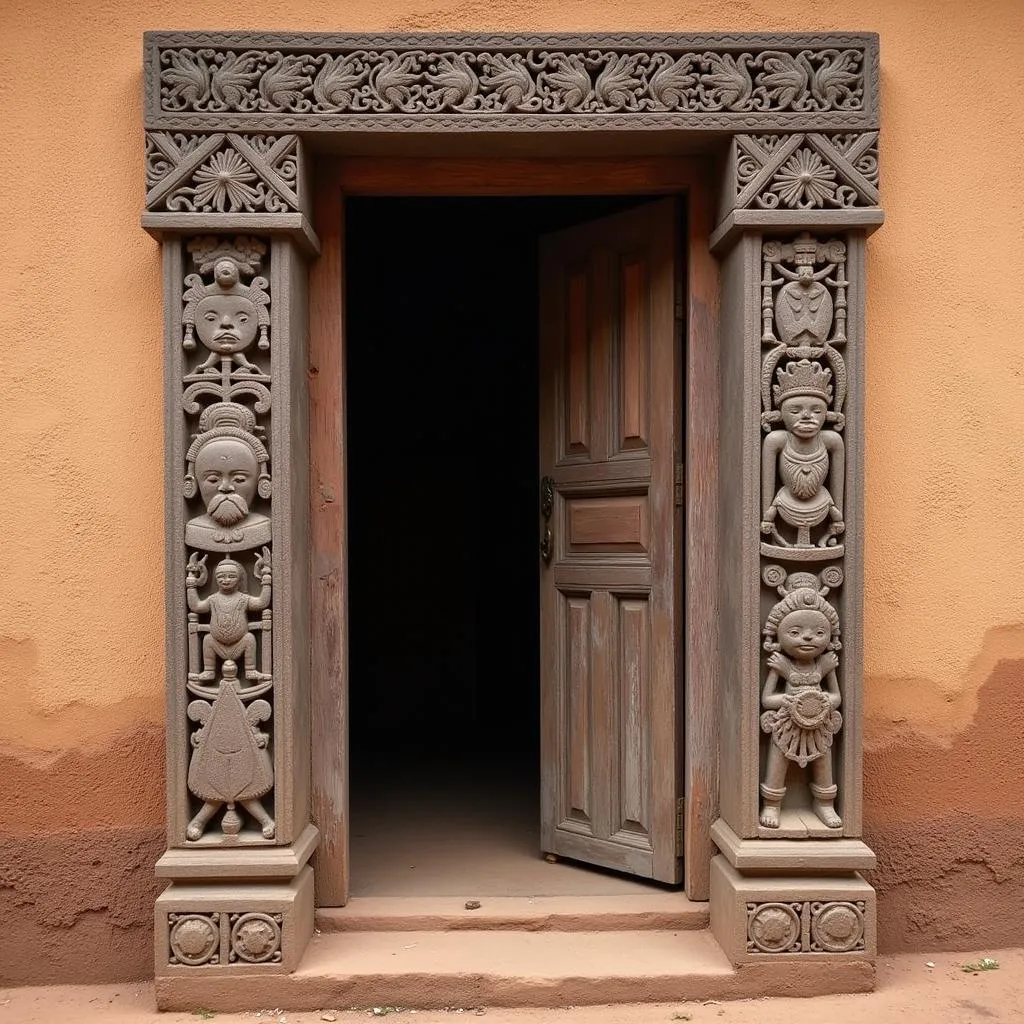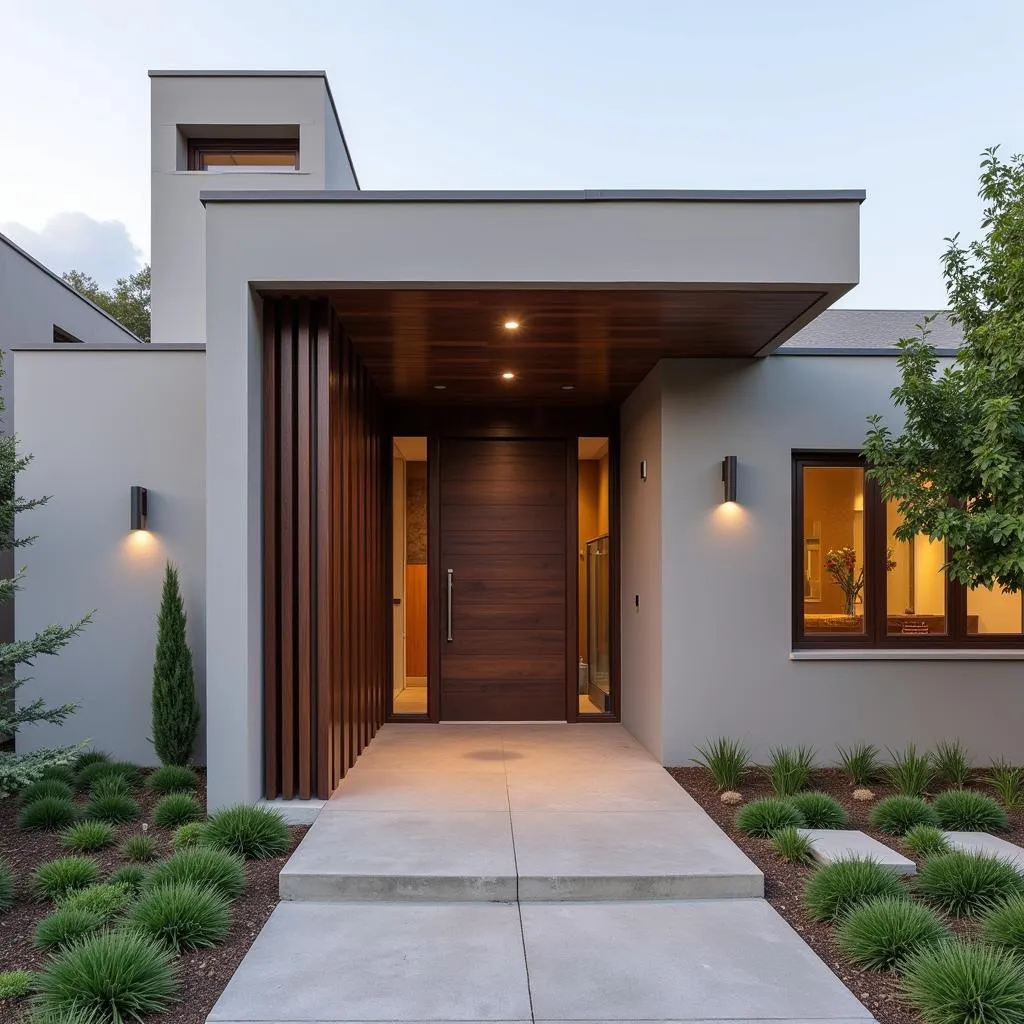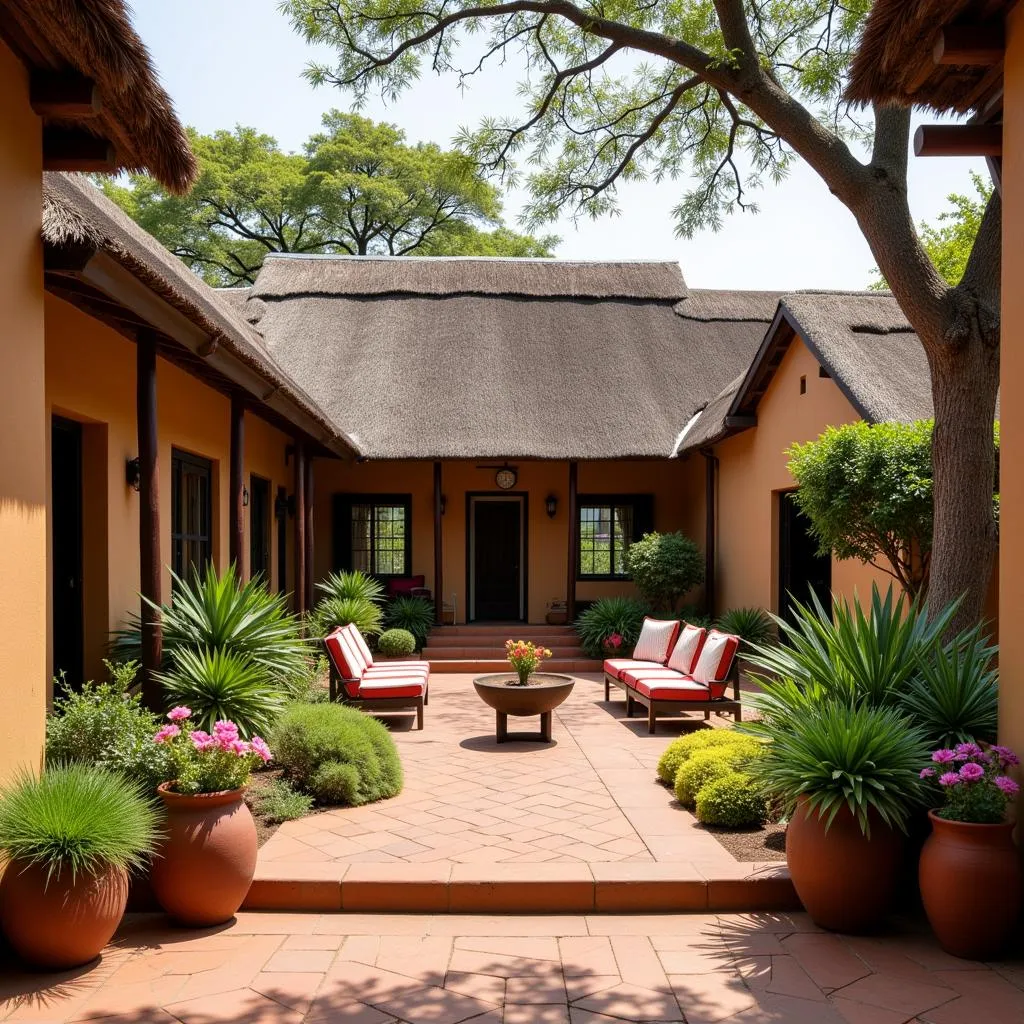Exploring the Welcoming Entrance of African Homes
The entrance to a home is often seen as a reflection of the occupants’ personalities and the culture they represent. In Africa, the entrance, or “doorway,” is more than just a physical passage; it’s a symbol of hospitality, community, and tradition. From the ornate doorways of traditional houses to the modern entrances of contemporary homes, African Housing Entrances tell stories of resilience, artistry, and a deep connection to the land.
A Journey Through African Housing Entrances
African housing entrances come in diverse forms, each with its unique meaning and significance. Let’s explore some of the common features and styles that characterize this important element of African architecture:
Traditional Entrances
- Symbolic Doorways: In many traditional African cultures, the entrance to a home is adorned with symbolic elements that represent protection, fertility, and good fortune. These elements often include carved figures, animal motifs, and intricate geometric patterns.
- The Importance of Color: Colors play a significant role in African architecture. For example, red is often associated with strength and vitality, while white symbolizes purity and peace. These colors are often incorporated into the design of the entrance to enhance its aesthetic appeal and cultural significance.
- Open-Air Courtyards: Many traditional African homes feature open-air courtyards that serve as a transition zone between the outside world and the interior. These courtyards are often decorated with plants, flowers, and seating areas, providing a welcoming space for family and guests.
Modern Entrances
- Contemporary Designs: Modern African homes often embrace minimalist designs that prioritize functionality and practicality. The entrances of these homes are characterized by clean lines, sleek materials, and a focus on natural light.
- Blending Tradition and Modernity: In many cases, modern architects in Africa incorporate elements of traditional design into their contemporary creations. This blending of tradition and modernity results in unique and aesthetically pleasing entrances that pay homage to African heritage while embracing contemporary trends.
Beyond Aesthetics: The Importance of Hospitality
The entrance of a home is the first point of contact for visitors and often sets the tone for the entire experience. In African culture, hospitality is paramount, and this is reflected in the design and welcoming nature of housing entrances.
“A warm welcome is always extended to guests, regardless of their status or background. The entrance of a home is where this warm welcome is initially conveyed.” – Amina Diallo, Architect and Cultural Heritage Expert
Cultural Significance
The entrance of a home is not just a physical passage but a reflection of the cultural identity of the community. It serves as a place where family and friends gather, where traditions are shared, and where stories are told.
Conclusion
African housing entrances offer a fascinating window into the rich cultural diversity of the continent. From the symbolic doorways of traditional homes to the modern entrances of contemporary residences, these architectural features represent a blend of history, artistry, and hospitality. As you explore the diverse landscapes and communities of Africa, take time to appreciate the stories that are told through the entrances of their homes.
Further Reading:
- The Significance of Doors in African Cultures
- African Architecture: A History and Introduction
Shortcodes:
 Intricate Carvings on a Doorway in Ghana
Intricate Carvings on a Doorway in Ghana
 Modern Entrance of a Home in South Africa
Modern Entrance of a Home in South Africa
 Traditional Open-Air Courtyard in Kenya
Traditional Open-Air Courtyard in Kenya
Note: This is a sample article based on the provided keyword and guidance. It can be further expanded and tailored to specific cultural contexts and architectural styles within Africa.


